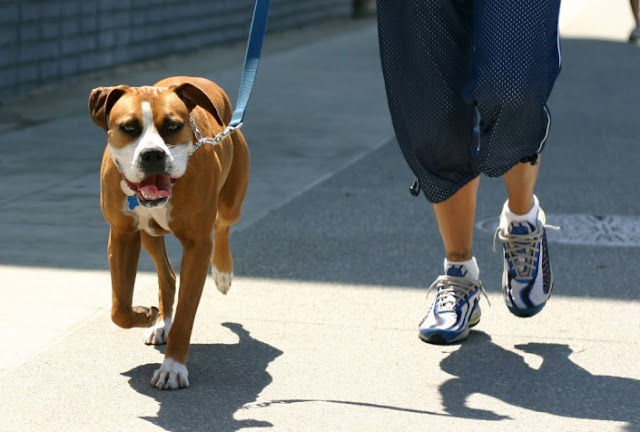Paralysis in a dog's hind legs, while not life-threatening, can cause significant inconvenience in their daily activities. To understand the causes and how to treat this condition, please refer to the following information from our blog.
1. Why Do Dogs Experience Paralysis in Their Hind Legs?
1.1. Overexertion It may seem unlikely, but excessive activity can indeed lead to hind leg paralysis. Continuous training, running, and insufficient rest, especially during muscle-building exercises like tire pulling, high jumps, or endurance running, can weaken muscles over time, leading to degeneration in the limbs.
1.2. Improper Care Poor nutrition or overindulgence, where a dog eats anything it likes, can lead to nutritional imbalances. This can result in obesity, reduced activity, and weakened legs. Additionally, keeping a dog in a kennel for extended periods can limit natural movement and exercise.
1.3. Flat Feet (Hyperextension) Flat feet occur when the bones in a dog's front or hind legs lose their strength, causing part of the leg to bend and touch the ground when standing or moving. Over time, if untreated, this can lead to paralysis. This condition is often due to long-term nutritional deficiencies, such as a lack of calcium. It can affect all breeds but is more common in German Shepherds, Belgian Malinois, and Dobermans.
1.4. Calcium Deficiency Calcium deficiency is a primary cause of hind leg paralysis or flat feet, especially in growing puppies. Insufficient calcium can lead to abnormal bone development, weak bones, and increased risk of fractures.
2. Symptoms of Hind Leg Paralysis in Dogs
Symptoms can vary depending on the severity of the condition. Common signs include:
- Difficulty standing on the hind legs.
- Reluctance to move.
- Imbalanced walking or unstable hind legs.
- The hind legs may be positioned close together.
- Stiffness and swelling in the joints of the hind legs.
- Pain, numbness, or loss of sensation in the hind legs.
If you notice these signs, it is likely that your dog is suffering from hind leg paralysis. It is best to take your dog to a veterinarian for timely treatment.
3. Treatment for Hind Leg Paralysis in Dogs
3.1. Acupuncture and Physical Therapy These methods are effective for dogs with long-term paralysis, spasms, or movement difficulties due to injuries or accidents. Effective acupuncture techniques include:
- Electroacupuncture: Applying electrical stimulation to acupuncture points through needles.
- Aquapuncture: Injecting medication into acupuncture points.
- Moxibustion: Using heat from burning moxa (wormwood) to stimulate acupuncture points and relieve pain.
Massage, simple exercises, and infrared therapy can also be beneficial.
3.2. Medication If the paralysis is due to infection or inflammation, medication may be required. Always follow the veterinarian's instructions for administering medication.
3.3. Surgery For cases caused by disc herniation, disc slipping, or tumors, surgery may be the most effective treatment. Other solutions, such as anti-inflammatory drugs, may only provide temporary relief.
3.4. Calcium Supplementation For dogs with nutritional imbalances, particularly mild calcium deficiency, supplementation is essential. Ways to supplement calcium include:
- Feeding calcium-rich natural foods like shrimp, fish, crab, and bones.
- Providing specialized dog milk or calcium supplements.
- Including dry dog food that enhances calcium intake.
4. Caring for a Dog with Hind Leg Paralysis
In addition to veterinary treatment, you should implement a scientific care routine. Physical therapy may be painful, so proceed gently and consistently to aid recovery. If possible, have someone assist in holding the dog during therapy to prevent excessive twisting.
For otherwise healthy dogs with permanent hind leg paralysis, consider using a special wheelchair to aid movement. Ensure the dog has a suitable rest regime, appropriate exercise, and regular affection to improve their spirits.
5. Conclusion
This guide provides comprehensive information on treating hind leg paralysis in dogs. The best approach is to consult a veterinarian and follow the recommended treatments as outlined. Always provide excellent care for your pet!




